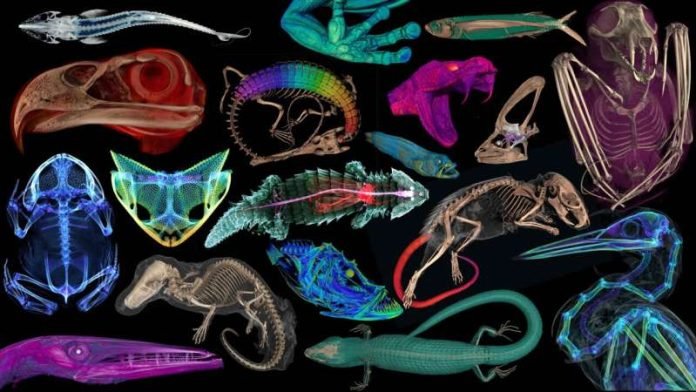
Imagine stepping into a world where you can explore the bones and insides of creatures from all across the vertebrate family without leaving your home.
This is now possible thanks to a groundbreaking initiative called openVertebrate (oVert), a collaborative effort involving 18 institutions that has transformed the way we interact with natural history.
Over five years, the project has digitized over 13,000 vertebrate specimens, creating detailed 3D models available for free online.
This initiative marks a new era in scientific discovery and accessibility, bridging the gap between historical collections and modern technology.
Natural history museums began in the 16th century as private collections of rare and exotic items. Over time, they evolved into public spaces that educate and inspire curiosity about the natural world.
However, the bulk of these treasures has remained hidden from the public eye, accessible only to a select few scientists. The oVert project is changing this, democratizing access to these priceless collections by bringing them into the digital age.
Led by figures such as Edward Stanley of the Florida Museum of Natural History and David Blackburn, the project has taken high-resolution CT scans of specimens ranging from tiny amphibians to the bones of humpback whales.
These scans go beyond just bones; with special techniques, researchers can also reveal soft tissues like muscles and organs, offering new insights without harming the specimens.
This digital transformation allows scientists worldwide to study these specimens without traveling, sparking new research and discoveries.
For example, an unexpected find was made when scanning spiny mice, revealing bony plates in their tails, a feature previously unknown in living mammals besides armadillos.
Other research based on oVert data has led to revelations about frog evolution, dinosaur swimming capabilities, and much more, showcasing the project’s vast potential for advancing our understanding of the natural world.
But the impact of oVert extends beyond the scientific community. Artists use the models for accurate representations, museums display them in exhibits, and they even find their way into virtual reality, offering immersive educational experiences.
The project has also been a boon for teachers, providing authentic, engaging materials for students to learn from.
The success of oVert highlights the importance of making scientific data freely available and the need for advanced tools to analyze this wealth of information.
The project has paved the way for further developments, like the NoCTURN initiative, which aims to maximize the potential of CT scans for research, education, and beyond.
As we continue to explore the rich tapestry of life on Earth, projects like oVert not only enrich our understanding but also inspire future generations to discover, learn, and innovate. In a world where technology and science converge, the possibilities are as limitless as our curiosity.
The research findings can be found in BioScience.
Copyright © 2024 Knowridge Science Report. All rights reserved.



